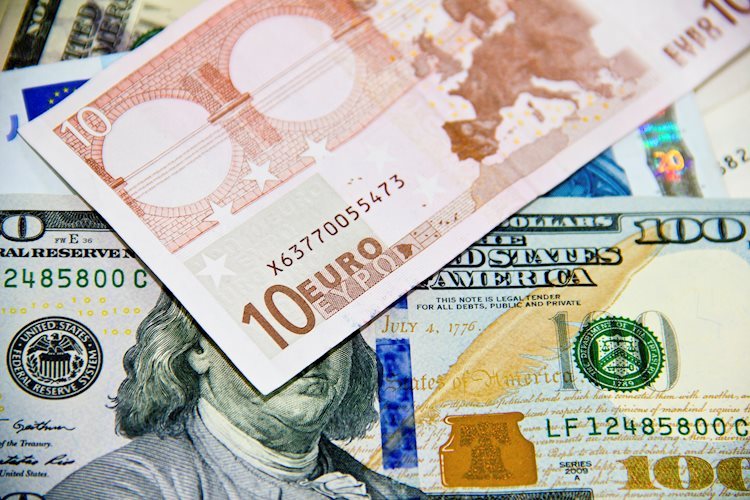EUR/USD has seen an appreciation as the US Dollar faced downward pressure ensuing the release of weaker Nonfarm Payrolls on Friday, causing the pair to trade around 1.0880 during Asian hours on Monday. The softer US Dollar can be attributed to the NFP data which came in at only 12,000 in October, significantly below market expectations of 113,000. The Unemployment Rate remained steady at 4.1% in October, matching consensus forecasts. However, with uncertainty surrounding the US presidential election looming, safe-haven flows could support the US Dollar and potentially limit the upside of the EUR/USD pair.
The New York Times/Siena College poll indicates a close contest between Democratic candidate Kamala Harris and Republican nominee Donald Trump across seven battleground states just two days before the US presidential election. Vice President Kamala Harris is shown to have slight leads in Nevada, North Carolina, and Wisconsin, while former President Donald Trump holds a narrow advantage in Arizona, with tight races in Michigan, Georgia, and Pennsylvania. The poll indicates that all matchups in these states fall within the 3.5% margin of error, adding to the uncertainty surrounding the election outcome.
The Euro saw support from stronger-than-expected economic growth in the third quarter and higher-than-anticipated inflation in the Eurozone. This prompted traders to reassess expectations for a larger rate cut by the European Central Bank (ECB) in December. Markets have fully priced in a 25 basis point cut in the ECB’s deposit rate for December, marking the fourth reduction this year following cuts in October, September, and June. The Eurozone Harmonized Index of Consumer Prices rose to 2.0% year-over-year in October, beating forecasts of 1.9%, while Eurozone GDP grew by 0.4% quarter-over-quarter in Q3, surpassing expectations of 0.2%.
The Euro, as the currency for 19 European Union countries in the Eurozone, is the second most heavily traded currency in the world behind the US Dollar. EUR/USD is the most traded currency pair with an average daily turnover of over $2.2 trillion in 2022. The European Central Bank, based in Frankfurt, Germany, sets interest rates and manages monetary policy for the Eurozone. The ECB’s primary mandate is to maintain price stability through controlling inflation or stimulating growth, with decisions made by the ECB Governing Council during meetings held eight times a year.
Eurozone inflation data, measured by the Harmonized Index of Consumer Prices (HICP), is crucial for the Euro’s performance. If inflation exceeds the ECB’s 2% target, the ECB may need to raise interest rates to bring it back under control, benefiting the Euro. Economic data releases, including GDP, PMIs, employment, and consumer sentiment surveys, impact the direction of the Euro. A strong economy attracts foreign investment and may lead the ECB to raise interest rates, strengthening the Euro. The Trade Balance, measuring exports and imports, also influences the Euro, with a positive balance strengthening the Euro.
In conclusion, the EUR/USD pair has seen an appreciation due to a softer US Dollar following weaker-than-expected Nonfarm Payrolls data, while the Euro found support from stronger economic growth and inflation in the Eurozone. Uncertainty surrounding the US presidential election and safe-haven flows could limit the upside of the EUR/USD pair. Economic indicators and data releases play a significant role in shaping the Euro’s performance, alongside the decisions and policies of the European Central Bank. The Euro’s strength is influenced by various factors such as inflation, economic data, and the Trade Balance, highlighting the importance of monitoring these indicators for traders and investors.











